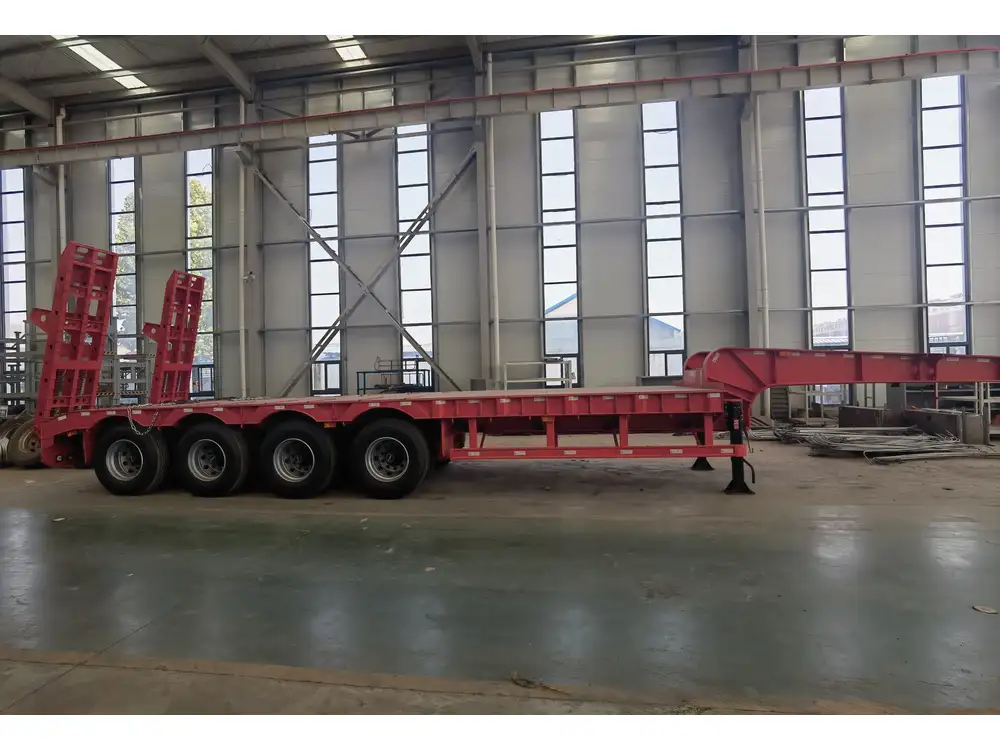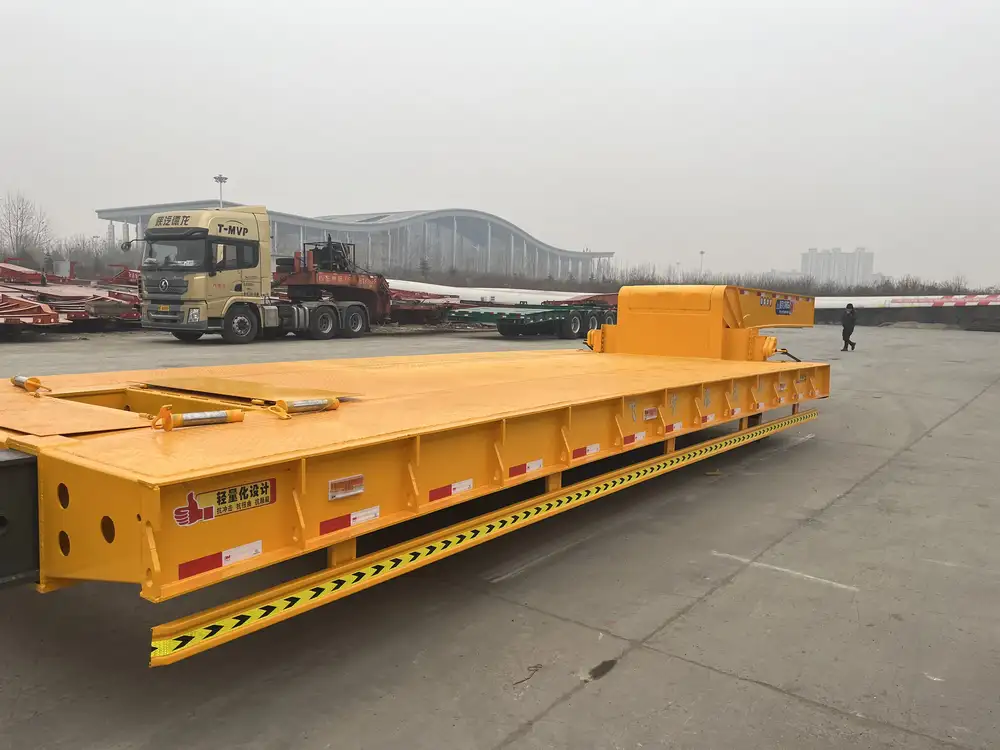When delving into the world of transportation and logistics, one question that rises to the surface is, how much does a 48-foot flatbed trailer weigh? This inquiry is not merely academic; it plays a crucial role in the operations of freight transportation, compliance with weight regulations, and overall logistical planning. Weight specifications can influence the efficiency of transporting goods, the safety protocols during hauls, and the cost implications involved in trucking operations.
A Deep Dive into 48-Foot Flatbed Trailers
An Overview of Flatbed Trailers
Flatbed trailers are an essential component of the transportation industry, characterized by their open design that allows for easy loading and unloading of cargo. Unlike enclosed trailers, flatbeds provide the versatility necessary for hauling diverse types of freight, ranging from machinery to large construction materials. Their structure typically consists of a robust frame with no sides or roof, facilitating a variety of cargo loads.

Weight Variance: What Influences a Flatbed Trailer’s Weight?
Understanding the weight of a 48-foot flatbed trailer is complex due to several influencing factors:
- Material Composition: The design and durability of flatbed trailers vary widely due to the materials used, such as aluminum, steel, or a composite blend. Each material affects weight differently; for example, aluminum trailers tend to be lighter than their steel counterparts.
- Design Specifications: Features such as the number of axles, additional reinforcements, and specialized configurations can contribute to a variation in weight. Trailers designed for heavy-duty use may come with added structural supports, thereby increasing weight.
- Accessories and Modifications: The inclusion of equipment such as tarps, winches, or toolboxes can impact the overall weight of the trailer.
| Material | Estimated Trailer Weight | Notes |
|---|---|---|
| Aluminum | 5,000 – 7,000 lbs | Lightweight, corrosion-resistant. |
| Steel | 7,000 – 10,000 lbs | Heavier but more durable. |
| Composite | 6,000 – 8,000 lbs | A balance between durability and weight. |
Average Weight of a 48-Foot Flatbed Trailer
While individual specifications can vary, a standard 48-foot flatbed trailer typically weighs between 5,500 lbs and 10,000 lbs. Factors such as load capacity, design specifics, and configuration will provide a fuller picture of what you can anticipate.
Load Capacity and Its Relationship to Weight
The weight of the trailer directly affects its load capacity. A considerable aspect of freight transportation management is ensuring that the combined weight of the loaded trailer does not exceed the legal limits set by Federal and state regulations, often referred to as Gross Vehicle Weight Rating (GVWR). For example:
- Typical GVWR for a 48-Foot Flatbed Trailer: Approximately 48,000 lbs.
- Estimating Load Capacity: The empty weight (tare weight) of the trailer subtracted from the GVWR will give the effective payload. For instance, if the flatbed trailer weighs 7,000 lbs, the maximum payload would be 41,000 lbs (48,000 – 7,000).

Regulatory Considerations for Weight Compliance
Navigating the regulatory landscape is fundamental for transport companies. Both the Federal Motor Carrier Safety Administration (FMCSA) and state authorities enforce weight limits for safety and infrastructure protection.
Common Weight Regulations Include:
- Maximum Weight Limits: 80,000 lbs for the Gross Combined Weight Rating (GCWR) of trucks and trailers combined on federal highways.
- Axle Weight Limits: Typically established at 20,000 lbs for single axles and 34,000 lbs for tandem axles.
It is imperative for trucking companies to maintain meticulous records of weight measurements to ensure compliance. Failure to adhere to weight regulations can result in hefty fines, road damage, and increased risk of accidents.
Economic Aspects of Weight
In the trucking industry, the economic implications of weight are undeniable. Understanding the weight of your trailer and load can significantly influence factors such as fuel consumption, insurance premiums, equipment maintenance, and route planning.

Key Economic Considerations:
- Fuel Efficiency: A lighter load generally equates to better fuel efficiency. Heavier trailers with heavier loads can lead to increased fuel consumption, resulting in higher operating costs.
- Insurance Costs: Heavier loads can increase insurance premiums due to the higher risk associated with transporting heavier freight, necessitating careful planning and accurate weight management.
- Toll Costs: Routes that impose toll charges often calculate fees based on weight, making it essential to keep weight within permissible limits.
Practical Applications: How to Weigh a 48-Foot Flatbed Trailer
Understanding the trailer’s weight is vital not only for legal compliance but also for operational efficiency. There are several recommended methods to weigh a flatbed trailer:
1. Public Weigh Stations
Most states have public weigh stations where trucks can be weighed. These stations can provide an accurate measurement of the combined weight of the truck and trailer, which is crucial for assessing payload.

2. Portable Scale Systems
For frequent weighing, investing in portable axle scales can be beneficial. These systems allow for precise measurements of axle weights and total weight, enabling better management of loads.
3. On-Site Weighing Solutions
Some businesses invest in on-site weighing systems for immediate access to weight data, streamlining operations and enhancing compliance.
Common Mistakes in Weight Management
In the realm of flatbed trailer operations, overlooking weight considerations can lead to severe problems. Highlighting common pitfalls can help manufacturers and operators avoid costly errors:
- Overloading the Trailer: Exceeding the weight limit can lead to equipment damage, safety hazards, and expensive fines.
- Misestimating Load Distribution: An unbalanced load can cause handling issues and potential accidents, increasing liability for operators.
- Ignoring Regular Inspections: Failing to regularly inspect equipment can result in unforeseen issues, including weight distribution problems and mechanical failure.

Conclusion: The Critical Importance of Weight Awareness in Flatbed Operations
In summary, understanding the weight of a 48-foot flatbed trailer is not merely a matter of curiosity; it holds significant ramifications for operational efficacy, safety, and compliance within the transport industry. By grasping the various influencing factors—from material composition to regulatory limitations—transport operators can enhance their logistical strategies, ensure compliance with regulations, and ultimately optimize their cost-effectiveness.
And remember, as we strive to streamline the trucking process and minimize costs, a focus on accurate weight estimates, meticulous load management, and a thorough understanding of regulations becomes indispensable for a thriving transportation operation. Through awareness and consistency, we can propel our businesses toward greater success in this competitive industry.
Frequently Asked Questions (FAQs)
1. How can I determine the exact weight of my flatbed trailer?
The most reliable way is to visit a public weigh station or use portable scale systems for more frequent assessments.

2. What are the consequences of exceeding weight limits?
Exceeding weight limits can result in fines, potential liability issues, damaged equipment, and a heightened risk of accidents.
3. Are there specific materials best suited for high-capacity flatbed trailers?
Aluminum trailers are lighter, making them suitable for general use, while steel is ideal for heavy-duty applications although heavier.
4. What can I do to enhance fuel efficiency when hauling heavy loads?
Optimizing route planning, maintaining a consistent speed, and ensuring proper tire pressure can collectively improve fuel efficiency.
Understanding these intricate details about a 48-foot flatbed trailer’s weight can empower trucking professionals and manufacturers alike, elevating operational performance and driving efficiencies within the industry.



